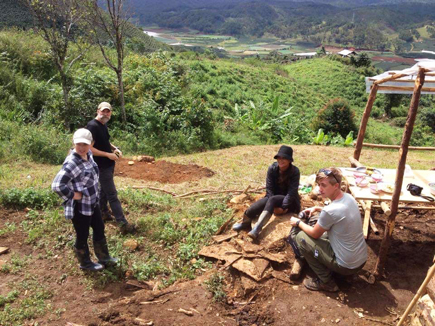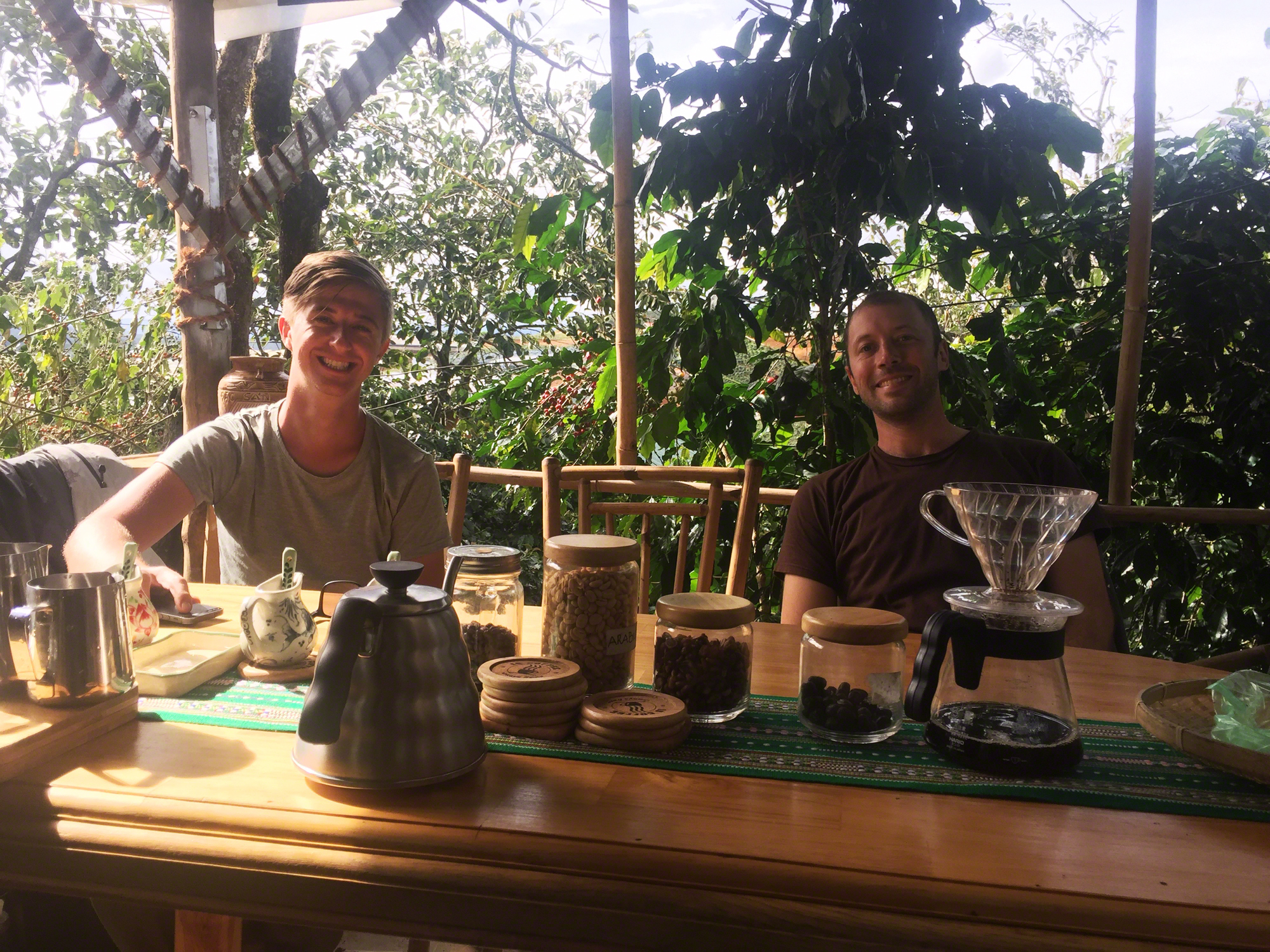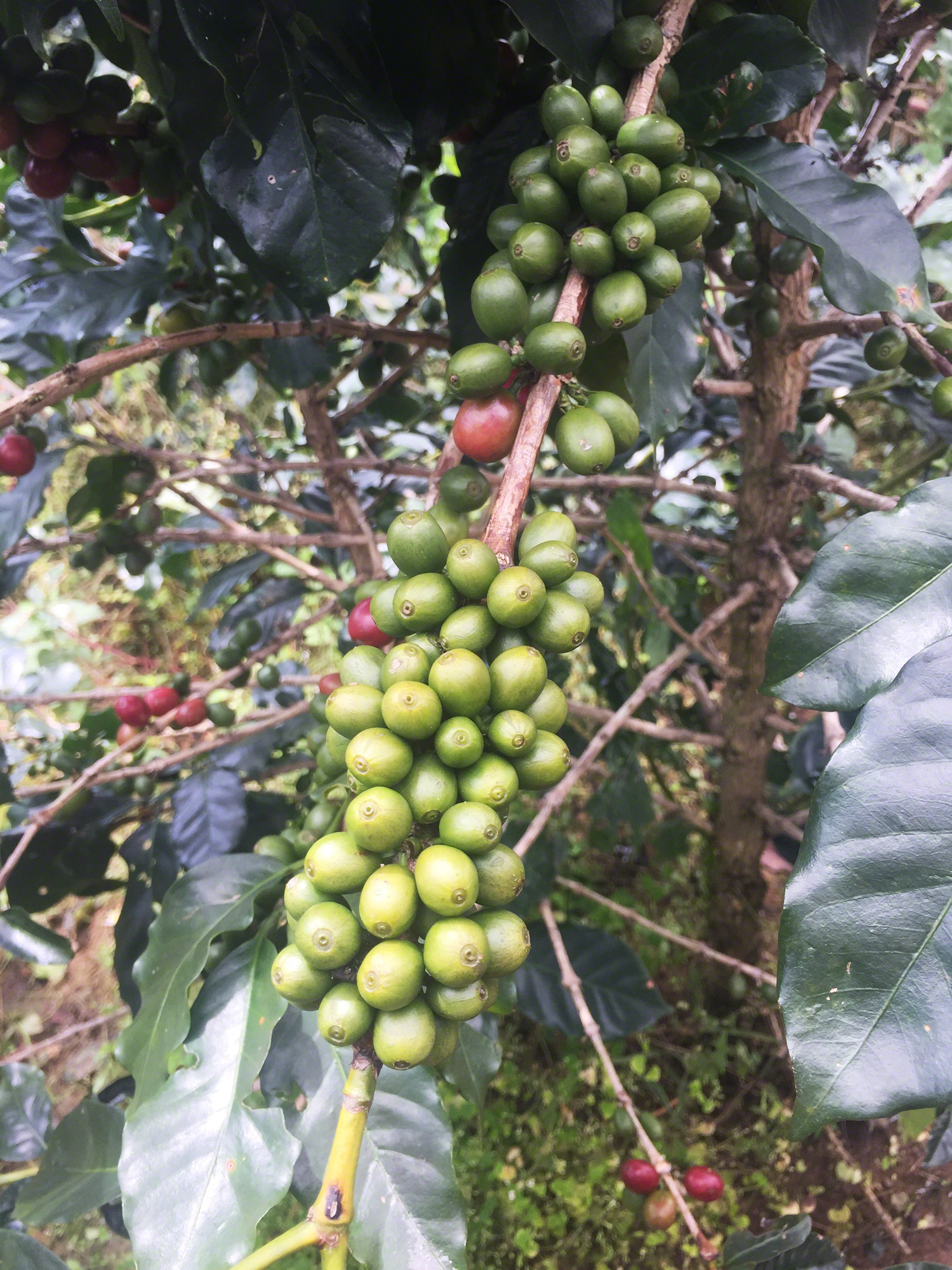My niece and I visited Rolan and Josh, of K’Ho Coffee again this year. My wife and I first visited them in 2014 and the improvements they’ve made since then are impressive. In two short years, they have built a roasting room that doubles as a showroom and retail shop where they have not only coffee on display, but also handicrafts made by the women of the tribe. In addition to the roasting room, they have also built an open cafe/seating area in the back, right in the middle of their home garden. Here, customers can sit and chat and enjoy a cup of coffee seated right next to productive coffee trees of various breeds.
During this visit, we toured a different group of farms starting with one of Rolan’s plots, situated next to others owned by her family. They just finished building a cook shack on site and have plans to expand it. They have an area cleared already for pulping cherries and another to build racks for raised beds for drying coffee. They have also created a small fish pond that will be stocked later.
The primary breed of coffee they have is Catimor. Catimor is a high-yield, disease-resistant cultivar originally bred in Portugal as a cross between Caturra and Timor, an arabica + robusta hybrid added specifically for robusta’s disease-resisting attributes. At the right elevations, Catimor can have good cup qualities and K’Ho farms, located at 1500-1700 MASL, are within that sweet-spot.
Earlier in the week that we visited, a tropical storm had hit the Philippines and the remnants of that system were still dumping rain on Vietnam when we visited. That made the motorbike trails leading to the farms very muddy and difficult to navigate. We also had a very small scooter that was struggling to get just one of us up the hill so we had to eventually park the bikes and hike the last kilometer or so, which took us up an additional 200-or-so vertical meters.
We visited three different plots and all three had healthy, well-cared-for shrubs showing very few signs of nutrition problems. When I asked about their fertilizing methods, the farmer said he fertilizes twice a year and that the soil is already good. There was a lot of insect damage visible on the leaves and Josh said they have been fighting berry borer beetles. Later in the day, at their house, he showed me some traps he had made for the beetles.
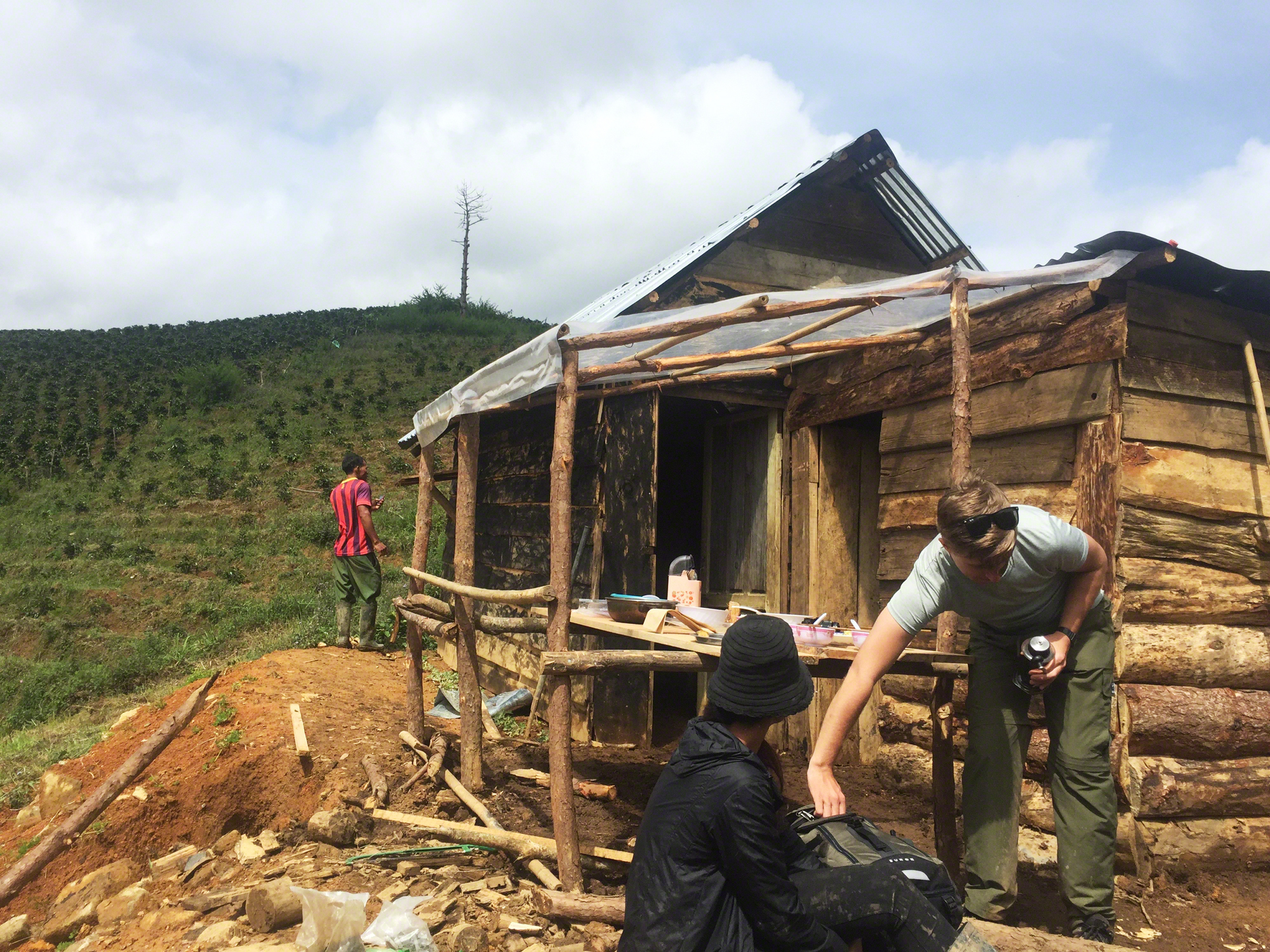
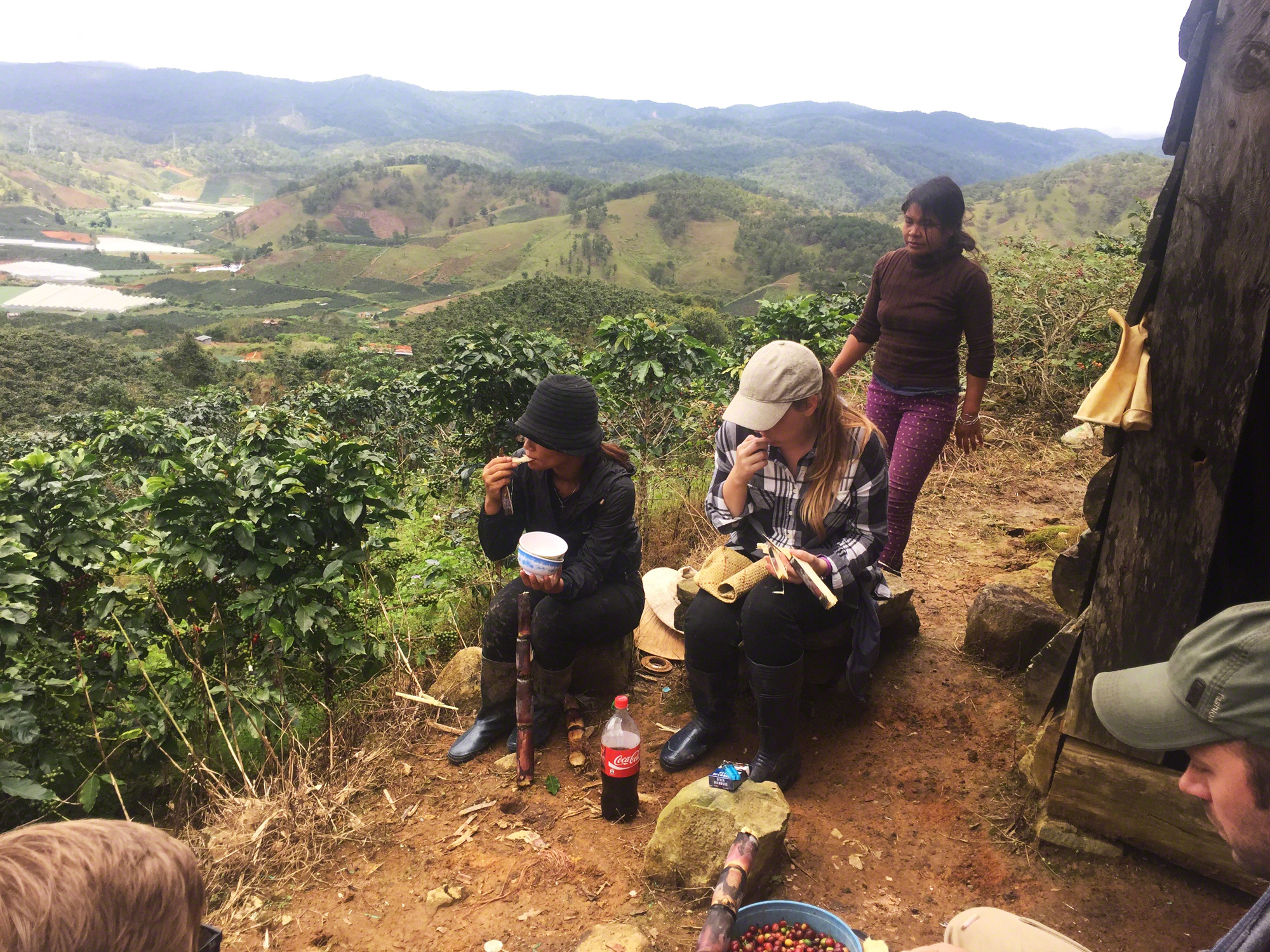
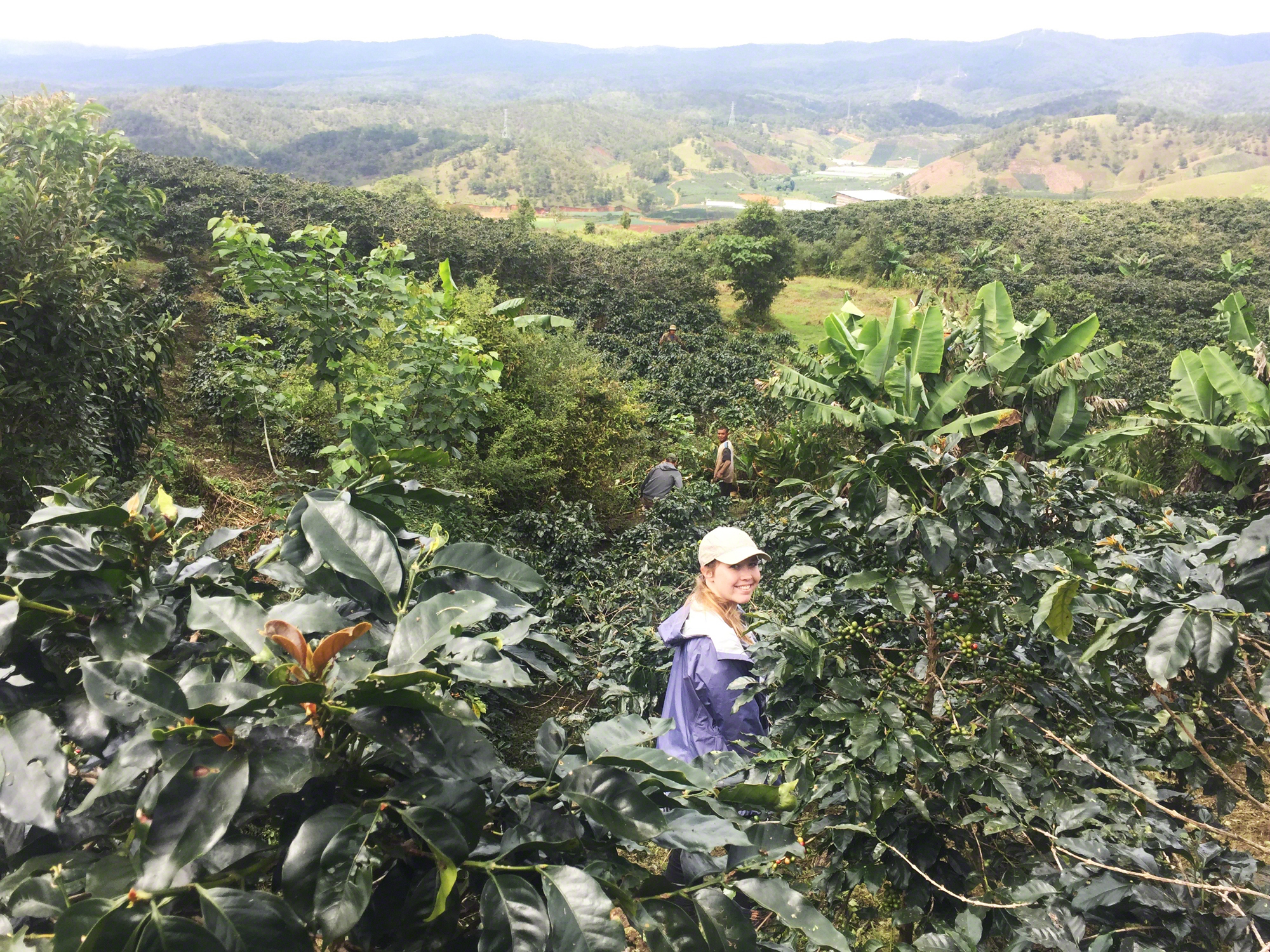
The K’Ho Tribe
Talking about their coffee without also talking about the K’Ho people would be a disservice. The K’Ho are a minority tribe living in the central highlands of Vietnam. They have been farming coffee since the 1860’s and still have heirloom arabica trees descended from seeds brought to Vietnam by the French. This makes them very unique in a country that is the number two supplier of robusta coffee (arabica coffee is twice as sweet with half the caffeine as robusta).
In addition to strong farming traditions, the K’Ho people make beautiful handicrafts, specializing in basket and cotton weaving. Part of their drive to preserve their traditions is to couple coffee production with their handicrafts; selling both side-by-side in their roasting room and local farmer’s markets. During our visit, they showed us some of their work and explained the time it takes to weave just one large blanket (weeks). One of the fascinating aspects for me was the ‘signature weave’ that each woman adds at the end of the piece, identifying who wove each article. Below are the unique signature weaves of two different blankets by two different women.
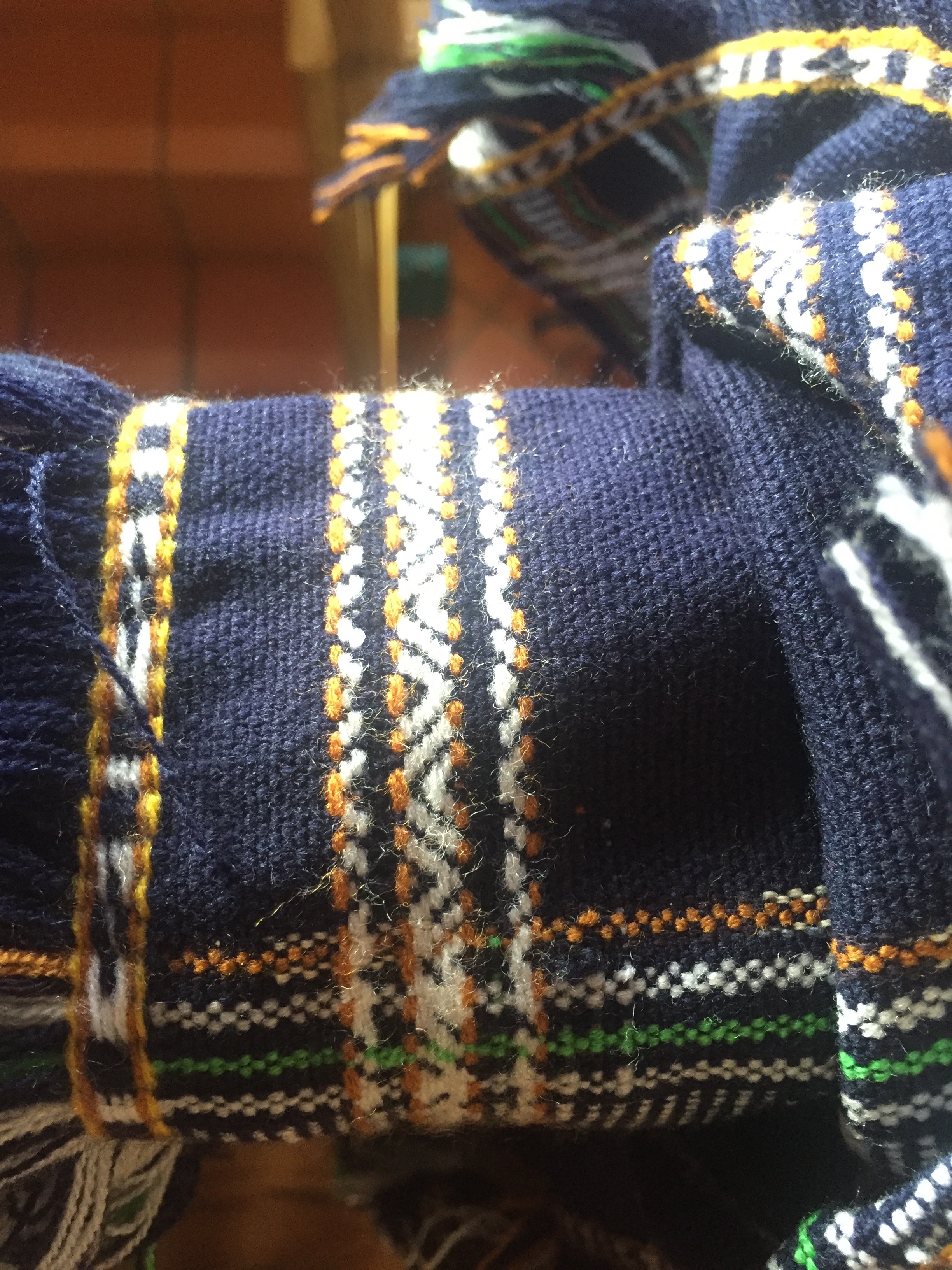
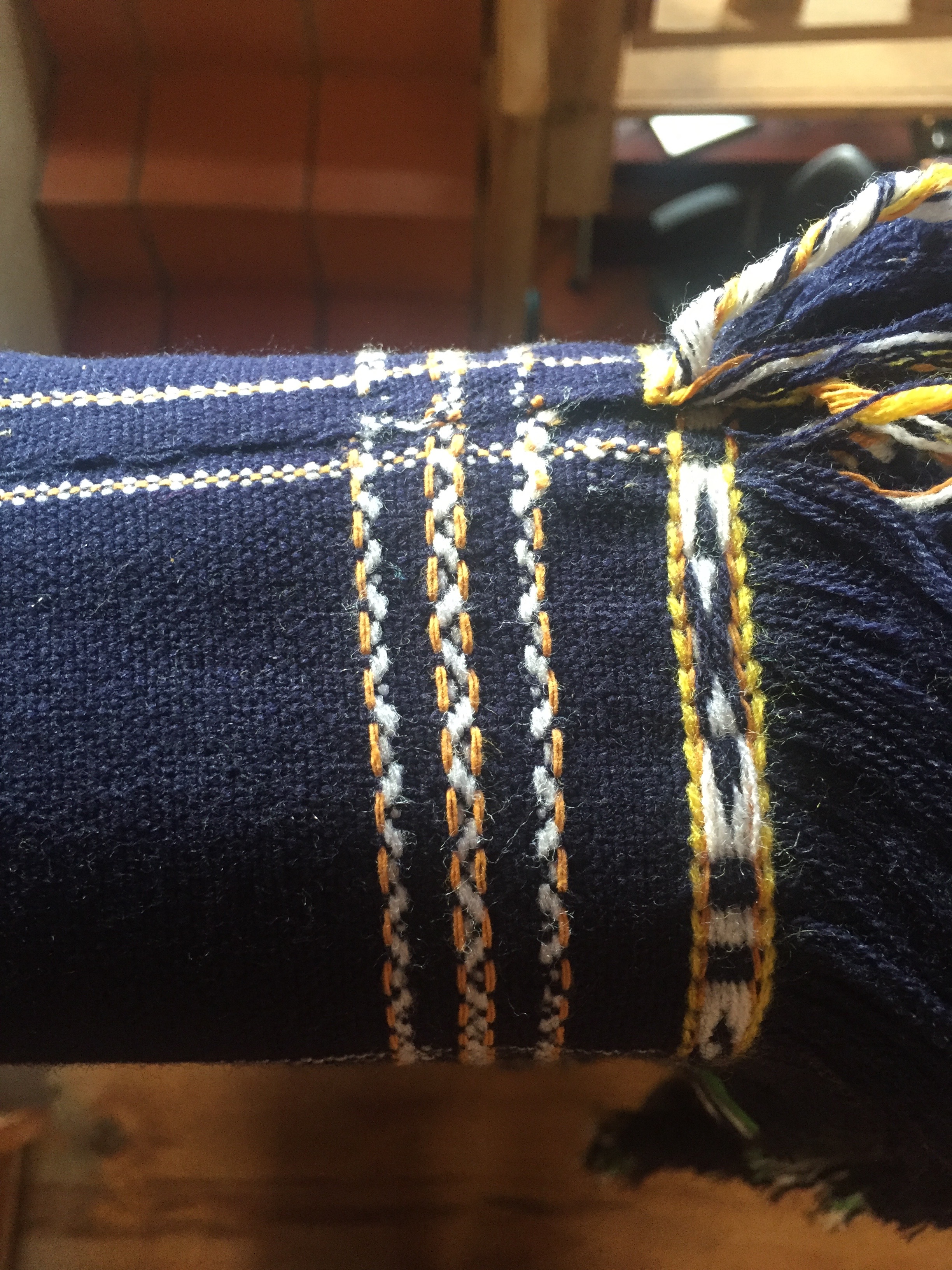
The Middleman
During our conversations throughout the day, Rolan mentioned the middleman, always with disdain. She explained that the middlemen are buyers/loansharks who often wait at the bottom of the hill to buy coffee at reduced prices, but always in cash. Because they pay cash, farmers or pickers who need quick money can sell to the middlemen, but at reduced profits. Even worse, farmers and/or pickers can borrow money from the middlemen at a relatively steep interest rate of between 10 and 30 percent! And while a farmer is in debt, he is often also obligated to sell the middleman his coffee, again at reduced prices. This causes a vicious cycle for the farmer: the high interest on the loan and low price for their coffee often pins them down in debt. To top it all off, many farmers who get trapped like this are also financially illiterate.
Because of this, one of the things they want to do at K’ho Coffee is to help educate the farmers about finances. It’s already very difficult to plan family finances when the bulk of one’s income is paid during the short harvest season. It’s nearly impossible to do when one isn’t financially literate.
Selling The Coffeelands
Many farmers are also selling their land to flower farmers, who clear the fields of all coffee trees and build large greenhouses to grow flowers. The coffee farmers might get a good price for their land, but they lose a major source of income and the family loses a major inheritance that may have been passed down several generations.
The valley behind Josh and RoLan’s house used to be covered with coffee trees but is slowly becoming dominated by greenhouses—a clear indication of how many farmers are taking the quick money in difficult times.
Despite their uphill battle, Rolan and Josh are making great strides in preserving the rich, cultural heritage of the K’Ho people through their coffee and handicrafts. I look forward to more visits in the future and seeing how much they’ve improved over this year!

